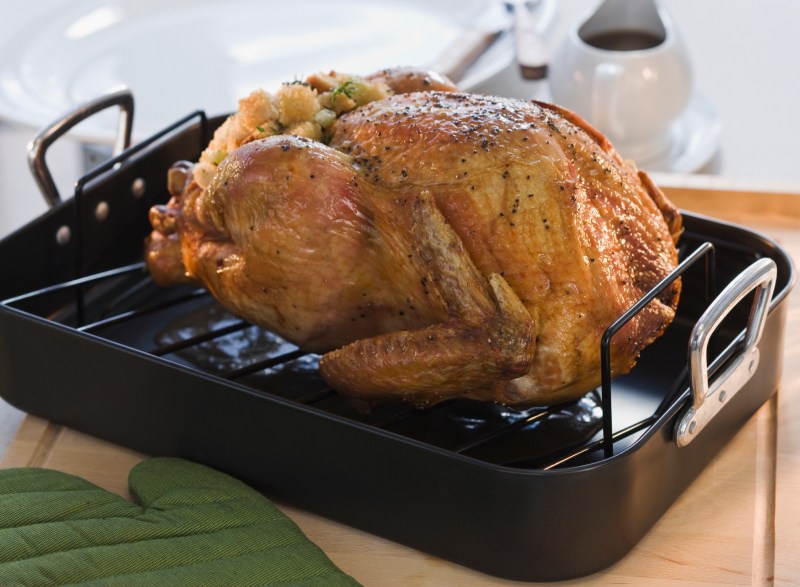What to Look for in a Roasting Pan: An In-Depth Guide for BBQ Enthusiasts
Written By James Morgan
As a barbecue enthusiast, selecting the right roasting pan can significantly impact your cooking success. Whether you're preparing a succulent turkey, a flavorful brisket, or a seasonal roast, the right pan makes all the difference. So, what should you look for in a roasting pan? Let's delve into the essential features and considerations.
Primarily, when considering what to look for in a roasting pan, you'll need to think about material, size, shape, and additional features. Each attribute can affect cooking times, taste, and convenience, ensuring your BBQs are always top-notch.

Material Matters: Choosing the Best Roasting Pan for BBQ
The material of the roasting pan is crucial. Popular materials include stainless steel, aluminum, cast iron, and non-stick options.
Stainless Steel
Stainless steel is a popular choice due to its durability and even heat distribution. This material is perfect if youre looking for a versatile pan that can handle various recipes. However, these pans usually don't come with a non-stick coating, so plan on doing extra scrubbing. Learn how to properly care for your stainless steel pan [here](https://www.grilling4all.com/blogs/blog/how-to-clean-aluminum-roasting-pan).
Aluminum
Aluminum pans are typically lighter and more affordable. They heat up quickly and distribute heat evenly, ensuring that your BBQ goodies are cooked to perfection. However, aluminum can warp at high temperatures and often requires careful handling.
Cast Iron
If you're looking for a sturdy, long-lasting pan, cast iron is your go-to. It retains heat exceptionally well and is often used for slow-cooked meals. However, it is heavier and requires special maintenance to prevent rust.
Non-Stick Options
Non-stick roasting pans are ideal for easy cleanup and low-fat cooking. However, they are prone to scratches and may need to be replaced more frequently than other types.

Size and Shape: What Fits Your BBQ Needs?
The size and shape of your roasting pan are critical, especially if you frequently entertain large groups or need a pan that fits in specific outdoor or indoor grills.
Standard Sizes
Roasting pans come in various sizes, typically ranging from 14 to 20 inches. Choose a size based on what you plan to cook regularly. If you often roast large cuts of meat, opt for a larger pan. For smaller gatherings, a 14-16 inch pan should suffice.
Depth and Shape
The depth and shape can influence cooking times and methods. Deeper pans (over 3 inches) are ideal for larger roasts and preventing splatter, while shallow pans (under 3 inches) are better for quicker cooking and browning. Rounded corners make it easier to whisk sauces or gravies directly in the pan, adding more flavor to your dish.

Additional Features for the Perfect BBQ Experience
Beyond the basic material, size, and shape, look for additional features that can enhance your cooking experience.
Racks
Most high-quality roasting pans come with a rack. These racks elevate the meat, allowing fat to drip off and ensuring more even cooking. They are especially useful for large roasts and turkeys.
Lids
Some roasting pans come with lids, which are perfect for slow-cooking and locking in moisture. If you plan on using your pan for various cooking methods, consider investing in one with a lid.
Handles
Sturdy, well-designed handles are essential for easy maneuverability, especially when handling heavy roasts. They should be oven-safe and easy to grip, even with oven mitts on.

Expert Tips: Making the Most Out of Your Roasting Pan
Even with the best roasting pan, there are techniques to master for the perfect BBQ.
Preheat Your Pan
Navigate the preheating process accurately to enhance the flavors and texture of your dish. This helps in achieving a crispy exterior while keeping the interior moist.
Use Drip and Flavour Racks
Employ drip trays for easier cleanup and flavor racks to infuse your roast with additional taste. These simple additions can elevate your BBQ game, giving you restaurant-quality dishes effortlessly.
Rest Your Meat
Always let your meat rest after cooking. This allows the juices to redistribute, making your roast more tender and flavorful.
External Resources: Further Reading
To gain a deeper understanding of the importance and versatility of roasting pans, consider checking out these additional resources:
Best Uses for Your Roasting Pan
FAQs
What is the best material for a roasting pan?
The best material depends on your needs. Stainless steel is versatile, aluminum is affordable, cast iron is durable, and non-stick options are easy to clean. Choose based on your cooking style.
Can I use a roasting pan on the BBQ?
Yes, many roasting pans are suitable for BBQ use. Ensure your pan is oven-safe and can withstand high temperatures.
Do I need a roasting rack?
While not essential, a roasting rack helps in achieving even cooking and allows fat to drip off. Its highly recommended for large cuts of meat.
As an Amazon Associate, I earn from qualifying purchases.



